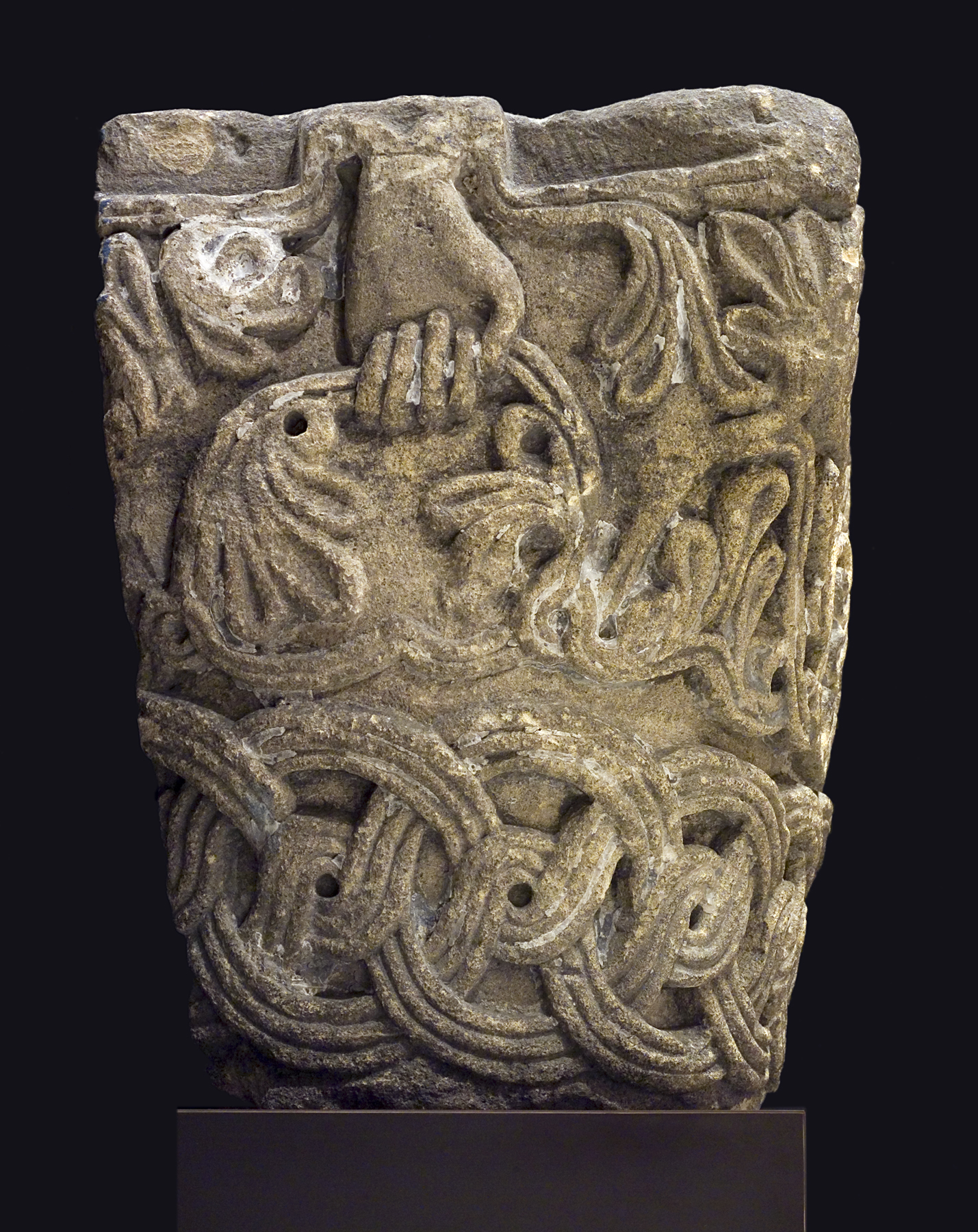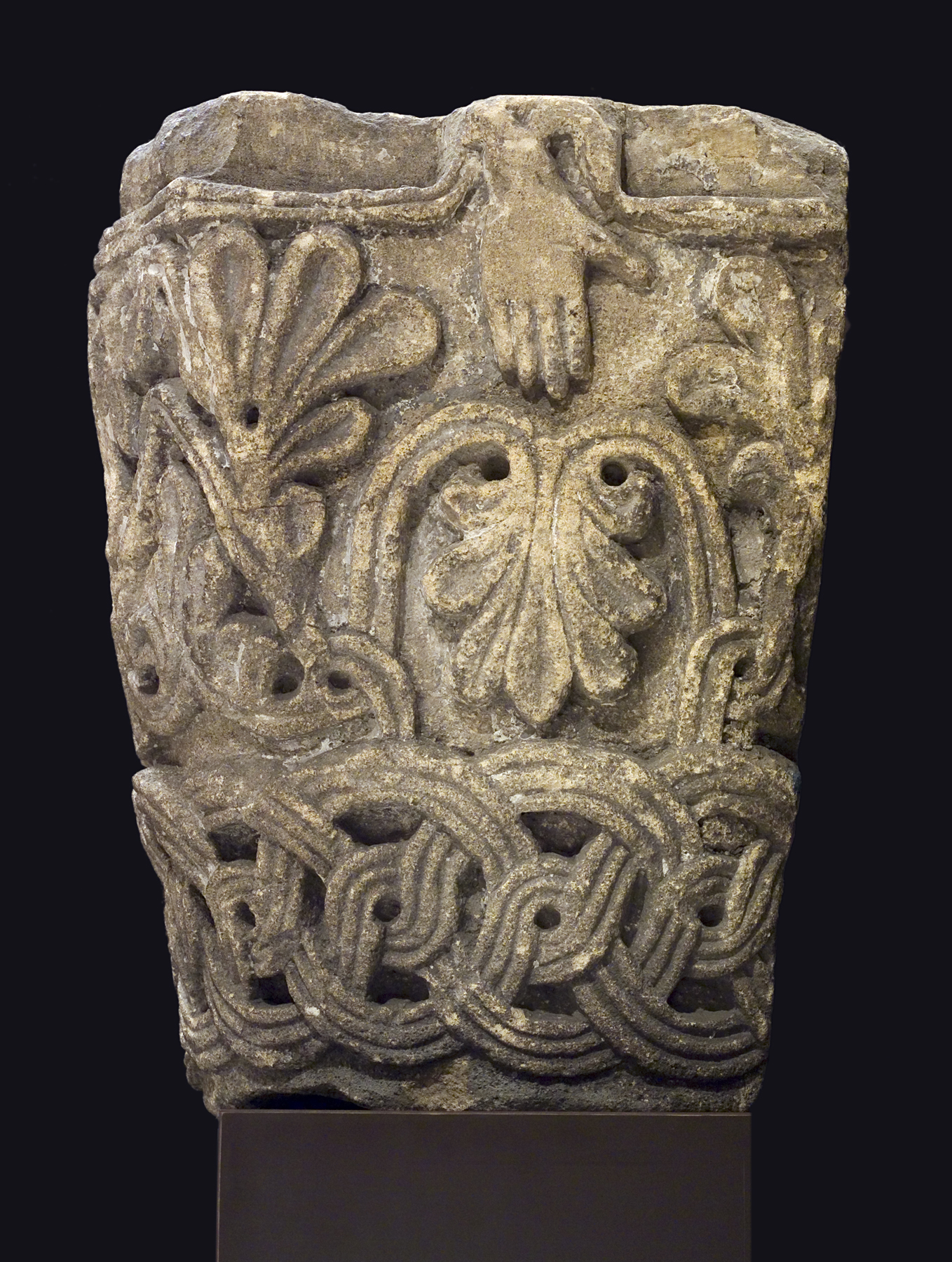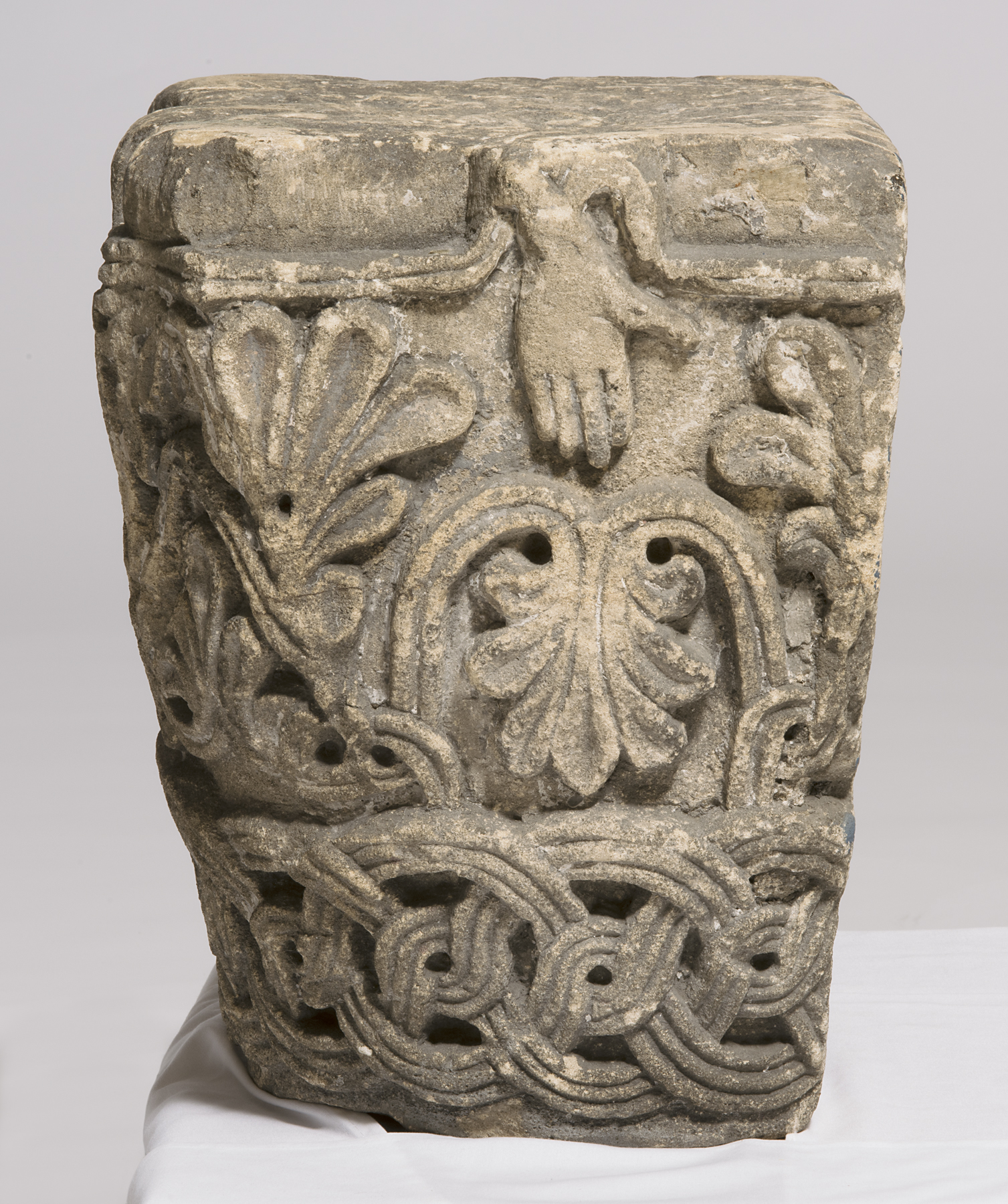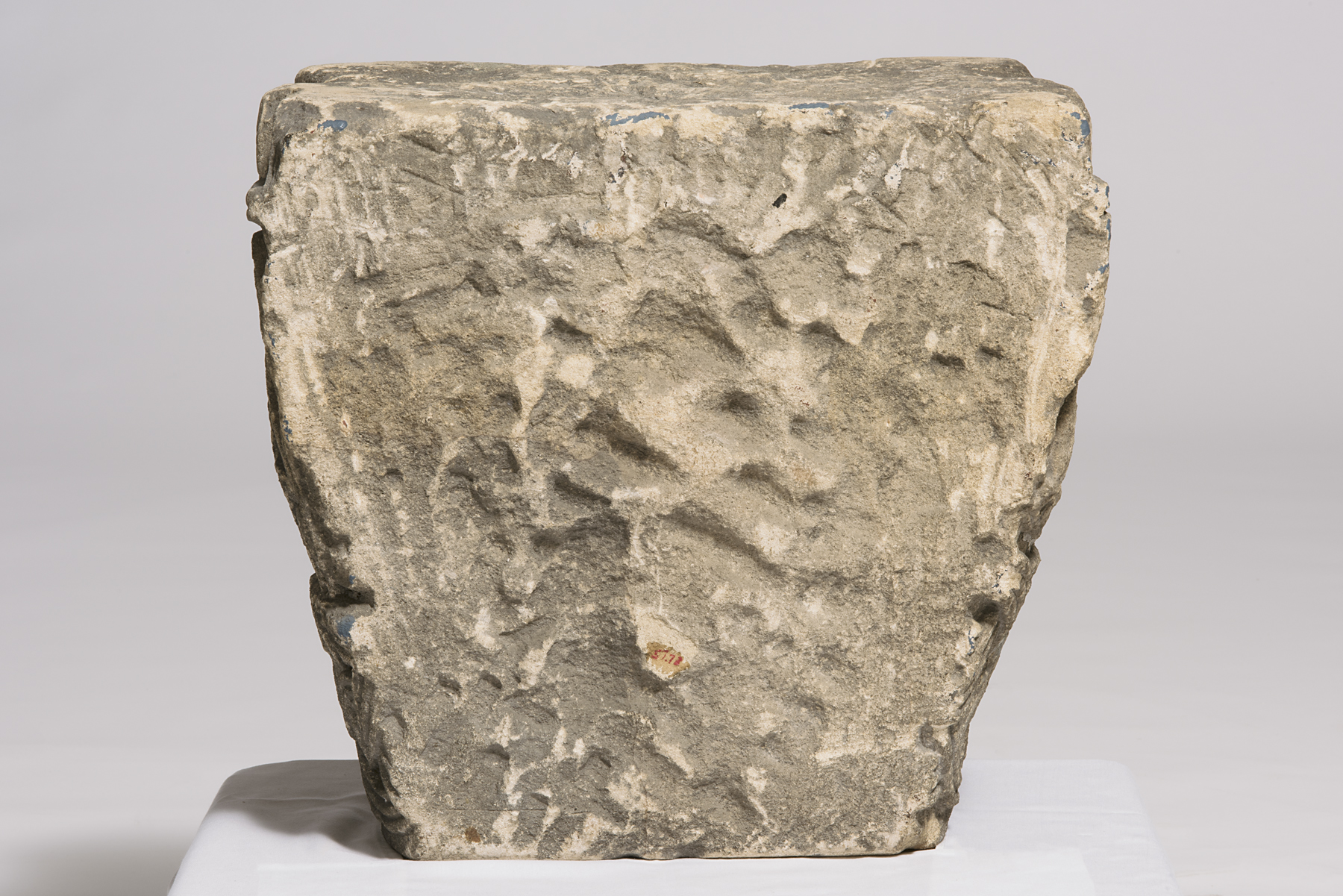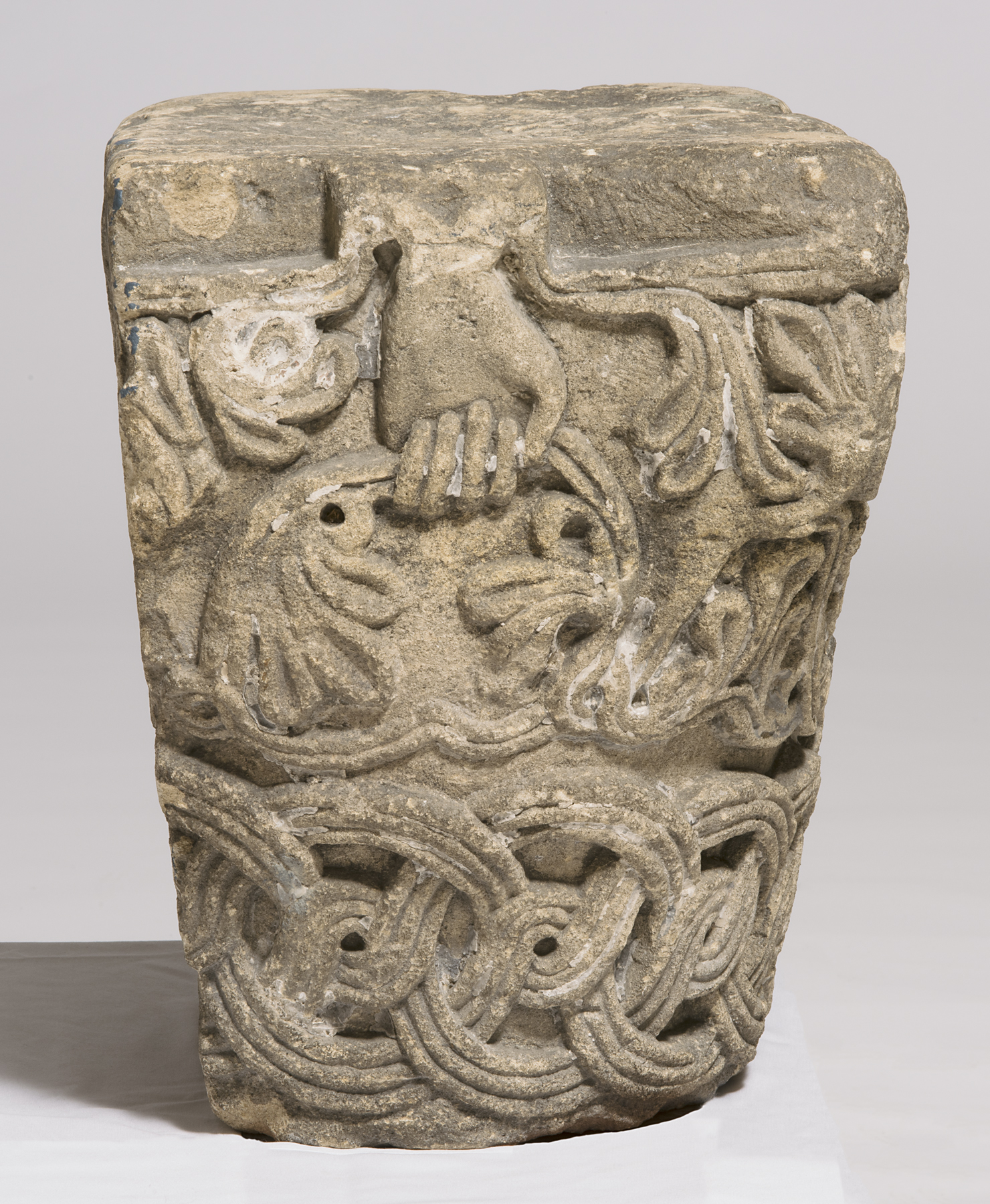half capital with interlace and hands, unknown maker from France
Artwork Overview
half capital with interlace and hands
, 1100s
Where object was made: France
Material/technique: carving; limestone
Dimensions:
Object Height/Width/Depth (Height x Width x Depth): 47.2 x 49.5 x 35.6 cm
Object Height/Width/Depth (Height x Width x Depth): 18 9/16 x 19 1/2 x 14 in
Object Height/Width/Depth (Height x Width x Depth): 47.2 x 49.5 x 35.6 cm
Object Height/Width/Depth (Height x Width x Depth): 18 9/16 x 19 1/2 x 14 in
Credit line: Museum purchase
Accession number: 1957.0073
Not on display
If you wish to reproduce this image, please submit an image request

